Surgeons in 1812
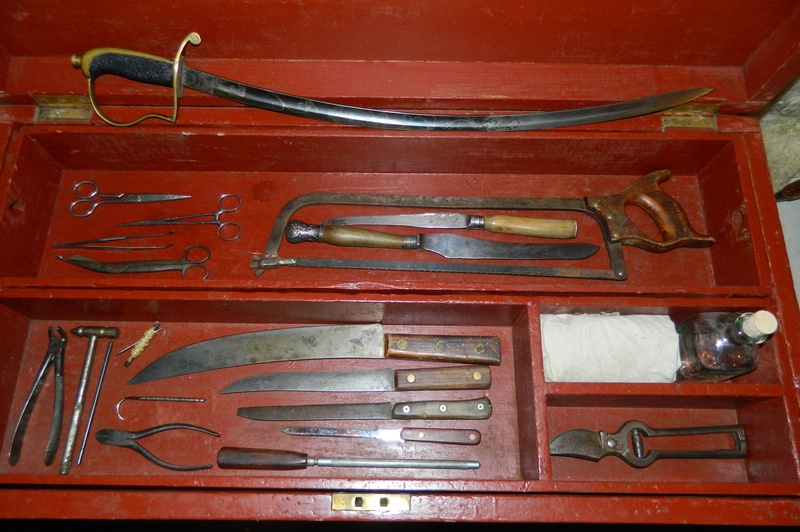
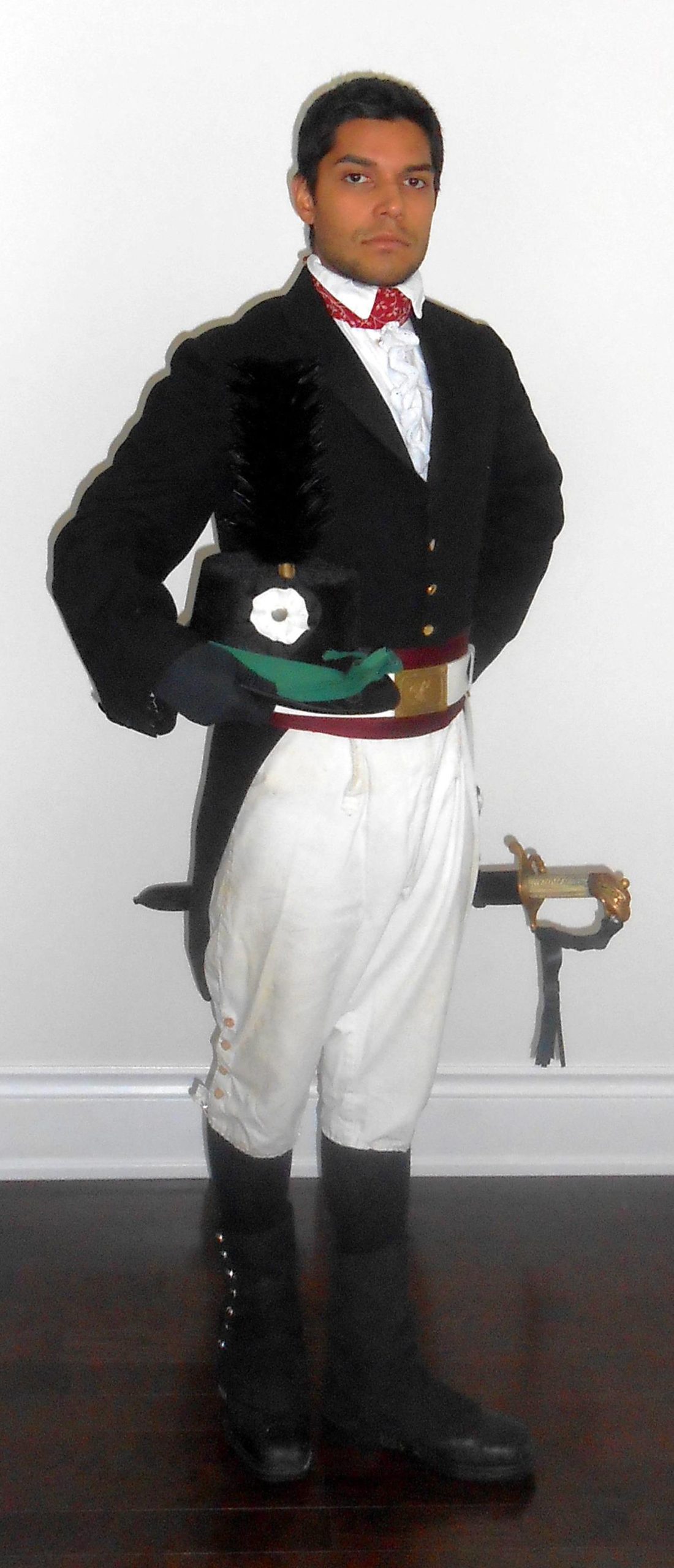
During the war of 1812, medicine was very primitive by today’s standards. There was no anesthetic and society didn’t understand how poor hygiene and pollution could cause disease and infection. This was the major cause of death in the world because of poor nutrition, over crowed living spaces and primitive sanitation.
“Soldiers Disease” Dysentery was caused by bacteria in the water that was consumed on a daily basis. Officers on many accounts accidentally set up their armies camps downstream of the town’s mills that made their food. Without the knowledge of proper sanitation, they poisoned themselves by pouring their wasted materials in to the water.
New recruits were more likely to pick up infections, rather than seasoned troops who have built up immunity to bacteria. 40% of new recruits died of disease while only 7% of career soldiers passed.

Soldiers Wounded in battle that could not be carried off the field, had to walk for miles sometime to the nearest army camp hospital or aid station.

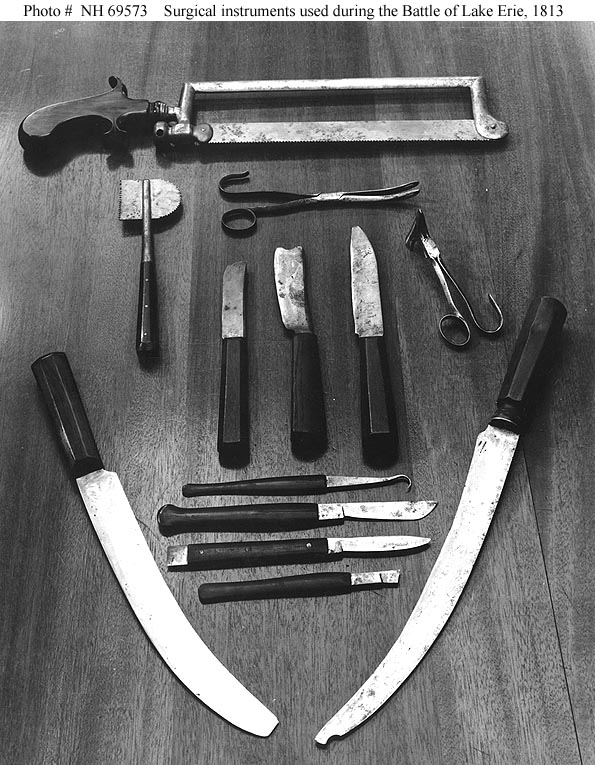
Battle Field Triage Hospital
Just off the battle field an aid station like this would of been set up for wounded soldiers falling back from the fight. Wounds from musket balls, artillery shell fragments & bayonet wounds were common battle field injuries. The horrible wounds would smash bone and take out large chunks of flesh, if a limb needed to be taken off they sent you back to the main army camp hospital.
Surgon Tools Used in the Battle of Lake Erie 1813 / Example Of Soldier Wounded in Battle
(Now all surgeons’ tools are made out of stainless steel, instead of being hand forged iron, which can rust, making it less sterile)
Surgeons Headquarters Fort Erie 1814
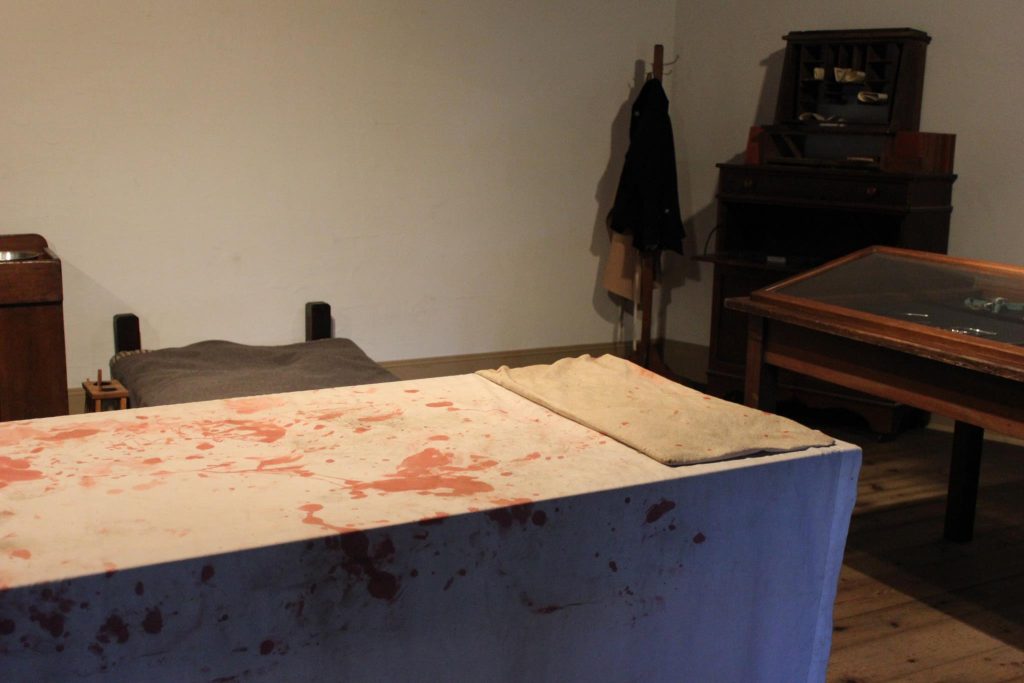
Battle Field Wounds
The Soldiers that were lucky enough to make it back, were set in priory of wounds and treated accordingly to save to most men. 20% of soldiers died from getting shot by a lead musket ball. Head and torso wounds were almost a 90% death rate because of infection – if they didn’t already die from the initial blow. Most battle injuries affected the limbs and could be amputated to stop bleeding and infections. If an amputation was needed, a soldier would of been brought into the surgeon’s office after waiting hours – maybe even days after being wounded in battle. The surgeon would assess and probe the wound with his finger to feel how much damage was done to the bone and tissue.
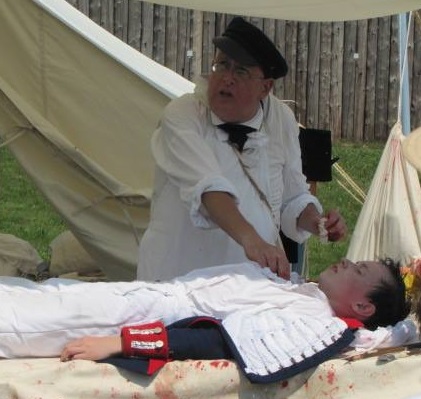
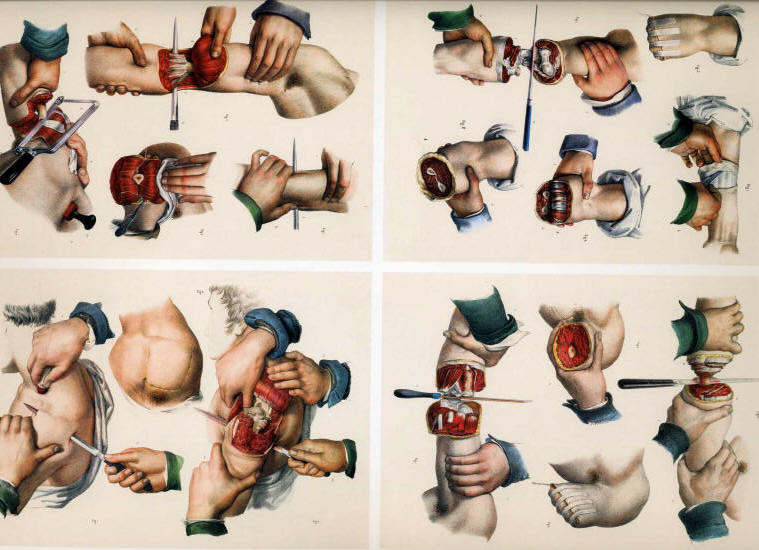
If there was a lot of bone damage and missing muscle, it would be life-saving to amputate the arm or leg. If you didn’t amputate the patient would most likely die of infection. The surgery was done without anesthesia and the patient would be awake. This was very uncomfortable and extreme painful.
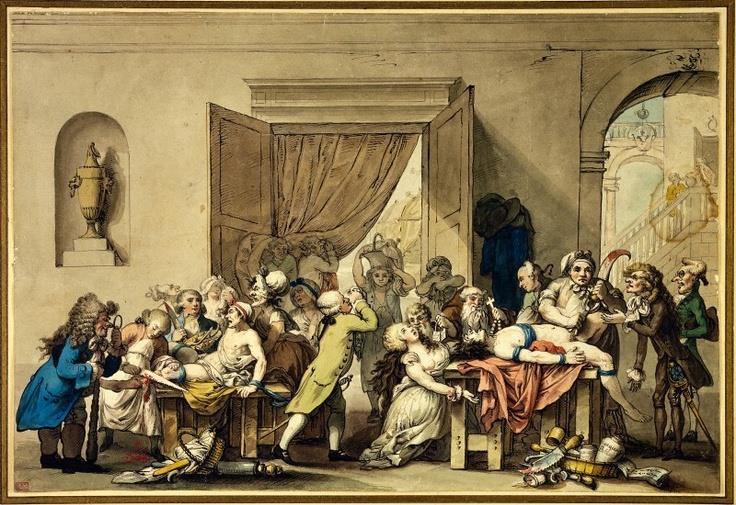
The Operating Theatre By Johann Heinrich Ramberg circa 1800
A watercolour nightmarish scene of surgery in a grand setting. Despite the splendour of the architecture, the medical practice appears in total disarray. To the left and right of the entrance, amputations are taking place on the surgical tables amid the commotion of various figures, including possible patients, medical operators and representatives of religious orders